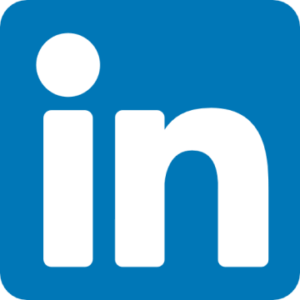

As businesses strive to remain competitive in an unpredictable market, one thing has become clear: the organisations that can anticipate change and adapt quickly are the ones best positioned to succeed. Workforce forecasting, once a reactive exercise based largely on historical data and guesswork, has become a strategic necessity for future-focused companies. And at the heart of this transformation is HR software.
Modern HR systems have evolved far beyond their administrative origins. Today, they serve as powerful data engines—tracking everything from employee turnover and hiring trends to productivity, engagement, and skills development. As workforce dynamics continue to shift with the rise of hybrid work, automation, and global talent mobility, HR software plays a critical role in helping businesses forecast future workforce needs with accuracy and agility.
In the past, workforce planning typically involved using spreadsheets and gut feeling to predict headcount needs. These methods were time-consuming, error-prone, and lacked the nuance required for long-term strategy. Today’s HR software platforms use real-time data, predictive analytics, and machine learning to bring clarity to this process. By analysing current workforce metrics alongside external market conditions, HR leaders can make smarter decisions about hiring, reskilling, and resource allocation.
One of the most powerful benefits of HR software is its ability to centralise workforce data in a single platform. This includes employee demographics, skills, performance metrics, turnover rates, and even absenteeism trends. When this data is analysed in context, it reveals patterns and potential risks that may impact the business down the line. For example, a spike in voluntary resignations in a particular department could signal cultural or workload issues that need to be addressed before they escalate.
In addition to identifying internal trends, HR software can incorporate labour market data, salary benchmarks, and industry forecasts to provide a more comprehensive view of talent supply and demand. This helps HR teams proactively plan for skill shortages, budget more effectively for recruitment, and build strategies for long-term talent development. Rather than reacting to staffing issues as they arise, businesses can build talent pipelines and succession plans that align with future growth.
Scenario planning is another area where HR software adds strategic value. Many modern platforms allow HR teams to run “what-if” models based on different business outcomes. For instance, what would happen to workforce needs if the company opened a new office? What if automation reduced the need for certain roles? By modelling these scenarios, organisations can develop flexible strategies that allow them to pivot quickly and effectively when circumstances change.
The future of workforce forecasting also involves a deeper focus on skills rather than just job titles. As job roles become more fluid and technology reshapes how work is done, it’s essential to understand the specific capabilities your workforce has—and what’s missing. Skills mapping tools within HR software allow businesses to assess current competencies, identify skills gaps, and plan targeted upskilling or reskilling initiatives. This ensures the organisation remains competitive, agile, and ready to meet future demands.
Moreover, the integration of artificial intelligence and machine learning into HR software is unlocking new dimensions of workforce forecasting. These technologies can detect patterns in employee data that may be too complex or subtle for human analysts to recognise. For example, AI can predict which employees are most at risk of leaving based on engagement levels, performance changes, or even sentiment in survey responses. This insight allows HR teams to take proactive steps—such as offering development opportunities or adjusting workloads—before problems lead to attrition.
Another emerging aspect of future-ready forecasting is the alignment between workforce data and broader business KPIs. Leading HR software platforms integrate with finance, operations, and sales tools to provide a holistic view of how workforce dynamics impact overall business performance. This alignment helps executives see HR not as a cost centre, but as a strategic driver of growth. With a unified data ecosystem, leaders can assess how staffing decisions affect revenue, customer satisfaction, and long-term scalability.
Remote and hybrid work arrangements have also made forecasting more complex—but also more critical. With teams spread across cities, countries, or even continents, understanding workforce distribution, productivity patterns, and collaboration habits has become vital. HR software offers visibility into these areas, enabling businesses to make location-agnostic hiring decisions, optimise remote onboarding, and structure teams in ways that enhance both performance and engagement.
Ultimately, workforce forecasting isn’t just about planning for headcount—it’s about preparing for change. In a time when economic shifts, technological disruption, and evolving employee expectations can transform business operations overnight, HR software provides the foresight and flexibility needed to navigate the unknown. It allows businesses to model possibilities, anticipate trends, and ensure the right people with the right skills are in place to meet whatever challenges lie ahead.
As we look toward the future, it’s clear that workforce forecasting will no longer be a back-office function—it will be a boardroom priority. Organisations that invest in the right HR software today are building the foundation for smarter, faster, and more resilient decision-making tomorrow.
In a world where agility is the new currency of success, HR software offers more than just efficiency—it offers vision.
For more relevant posts:
- What You Need to Know About People Analytics to Improve HR?
- What Does Artificial Intelligence AI Mean for HR?
- How to identify future business leaders
- HR Software’s Role in Workforce Analytics and Strategic Planning: Building a Data-Driven HR Team
- Leveraging Data Analytics for Strategic Workforce Planning





